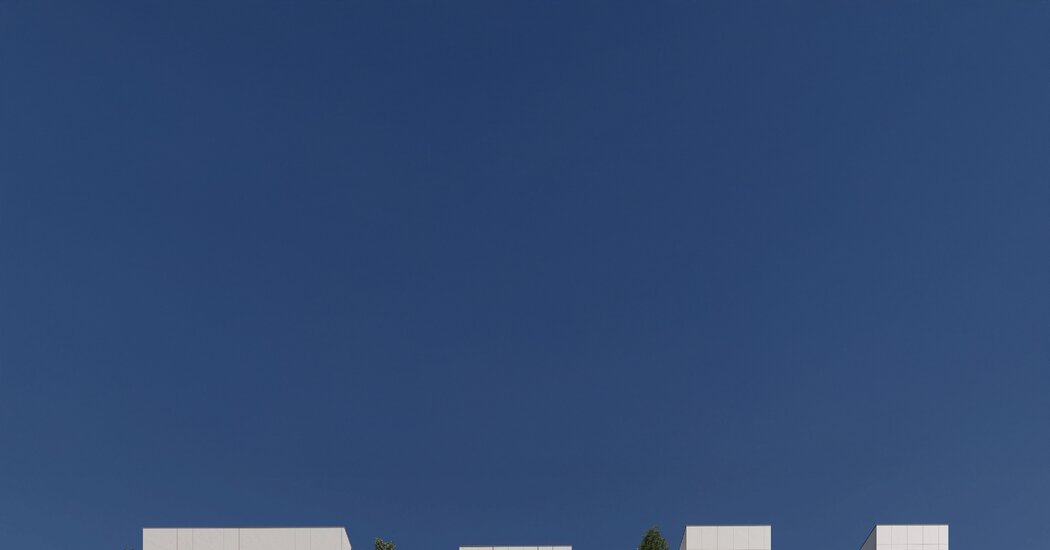His contacts in Ukraine have advised him to wait until the war ends to try to realize such ideas, which he plans to do mainly in an advisory role. “I think the architects rebuilding Ukraine should be Ukrainian,” he said. “There’s a lot of amazing talent. I think what they simply need is support.”
Speedstac’s narrative of resilience deeply impressed the French Pavilion curators. “Speedstac went right to the heart of what we were trying to do,” Mr. MacFarlane said. “It wasn’t about abandoning. It was about repairing. One is aware of what’s happened, but one is repairing with life.”
He and Ms. Jakob, the founders of the Paris-based architecture studio Jakob + MacFarlane, are known for adaptive reuse. In 2012, they finished the transformation of old docks along the Seine into the City of Fashion and Design building. Rather than find a new exhibition building in Venice this year, they modified the existing pavilion. They, too, hired Ukrainian architects after the war broke out.
“People, when they’re hurt, often don’t want to move,” Ms. Jakob reflected. “They want to stay where they are.” That sentiment mirrored Mr. Radewych’s design logic: to let residents remain rooted, even amid trauma, and to build on the foundations of what was already there.
Ryan E. Smith, the director of the School of Architecture at the University of Arizona and a founding partner of MOD X, a prefab construction advisory group, noted that Speedstac’s use of concrete isn’t ideal if one considers the carbon emissions associated with the material’s production. Neither would it be as effective as lighter weight solutions in places where speed is paramount. But Speedstac, he said, could be a good fit in Ukraine (and other vulnerable places) because of its robustness and the region’s familiarity with the technology.
The WZMH team, in partnership with Toronto Metropolitan University, is developing a concrete that’s 20 percent lighter than is standard, embeds captured carbon as one of its ingredients and even exhibits conductive properties that could one day power smart infrastructure. Collaborating with Ukrainian software engineers, it has created a real-time installation app called Doton that tracks crane movements and improves construction precision. “One invention leads to three or four others,” Mr. Radewych said.











